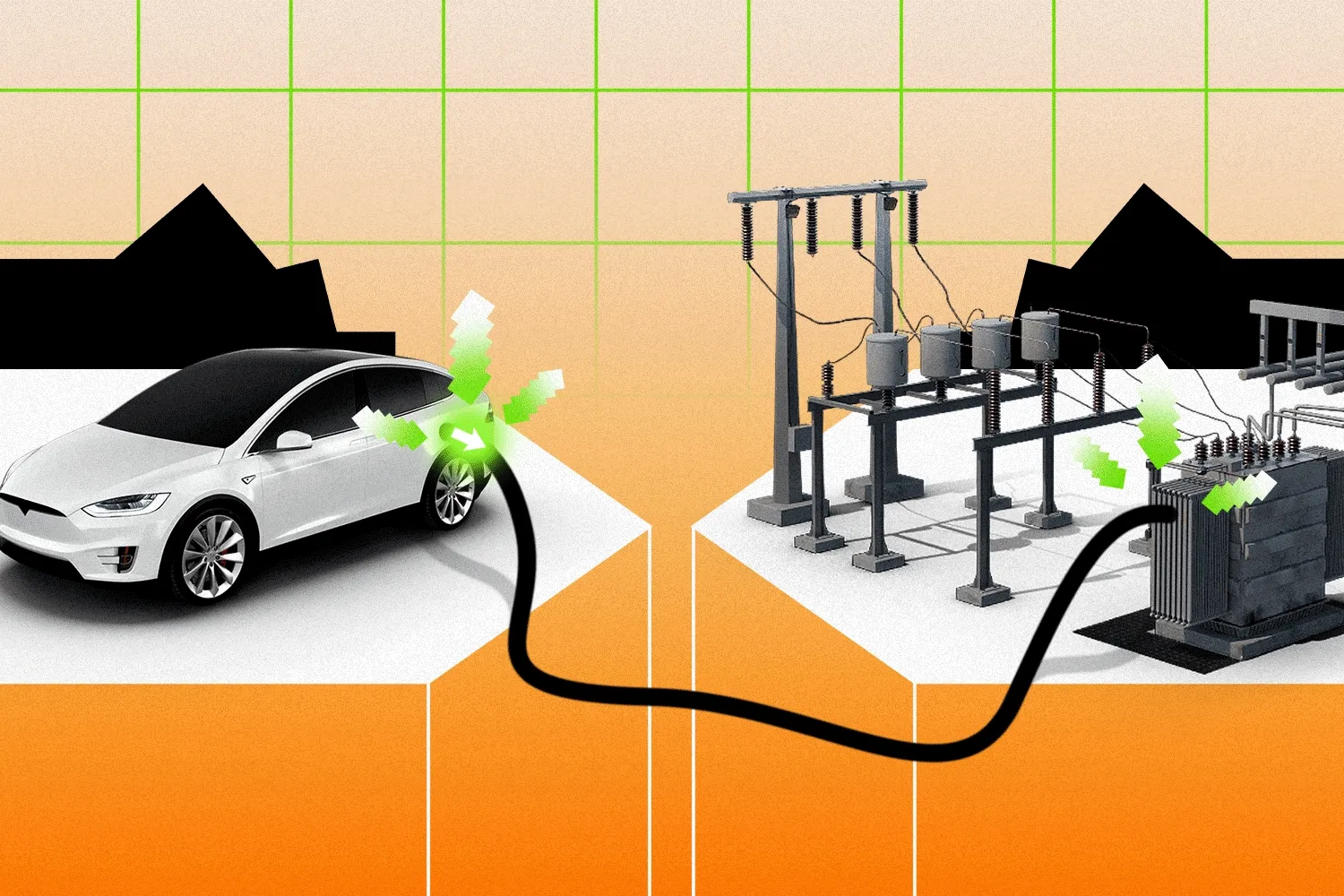Things that might help keep you cool this summer:
- Swimming pools
- Popsicles
- Electric vehicles (really!)
The idea behind a new partnership between vehicle-to-grid integration platform ChargeScape and software platform Leap is that EVs don’t have to be liabilities to the electric grid, but can collectively serve as assets on the scale of power plants.
The companies announced in a news release Wednesday that they’re teaming up “to accelerate electric vehicle participation in grid services programs across the United States.” ChargeScape and Leap said they’re trying to create “the largest EV virtual power plant” (VPP) in the country.
How does it work? A VPP is a pool of aggregated energy resources—like EV batteries—that can coordinate with grid operators to send power to the grid during times of need. Leap’s focus is on helping tech companies scale VPPs.
“We help them turn their millions of devices and customers into a resource that, to grid operators, looks just like a traditional power plant—only, as we all know, it’s much faster and much cheaper to build,” Jason Michaels, Leap’s CEO, told Tech Brew.
ChargeScape, meanwhile, is a platform that wirelessly connects with EVs and, in partnership with utilities, manages the flow of electricity in line with grid conditions. The startup, which launched last year, has the backing of BMW, Ford, Honda, and Nissan, with other automakers slated to join later this year.
Automakers are investing in the technology as part of the industry’s efforts to ease the EV charging experience for consumers, and deliver on the promise of vehicle-to-grid integration so that EV charging can actually benefit, rather than strain, energy grids. One of the potential benefits for EV drivers is the ability to sell power back to grid operators when demand is high.
Keep up with the innovative tech transforming business
Tech Brew keeps business leaders up-to-date on the latest innovations, automation advances, policy shifts, and more, so they can make informed decisions about tech.
“These automakers are committed to selling EVs, and they want to make the at-home charging experience as easy and low-cost as possible for their customers,” ChargeScape CEO Joseph Vellone, who will be participating in Tech Brew’s Power Shift event in New York City on May 29, previously told us.
Emerging vehicle-to-grid technologies allow EVs to discharge power back to buildings and grids. The opportunities around this technology are taking shape amid an increase in demand for electricity, driven in part by more EVs plugging in and construction of new data centers to support AI.
“There’s the immediate need of providing resiliency to the grid, and being able to have price-responsive loads that can reduce demand at critical times to be able to provide support to the grid and avoid blackouts,” Michaels told us. “There’s a chance for these EVs to be very responsive to grid needs and reduce loads at critical times when the grid is under stress.”
Heat wave: The initiative is rolling out just in time for summer, when the grid is especially vulnerable. PJM, the country’s largest power grid, recently warned that expected extreme heat this summer could lead to power outages. After launching in California, Michaels said the companies are eyeing Texas and New York as their next markets.
“The other solution that this brings is not so much about the stresses we have now, but how do we enable the grid to absorb 50 gigawatts-plus of data center and AI load, as well as the electrification of everything? Bringing back manufacturing, electrification of transportation—that’s all increasing electrical loads in the US in a way that we haven’t seen before,” he said. “You really need these virtual power plants.”
